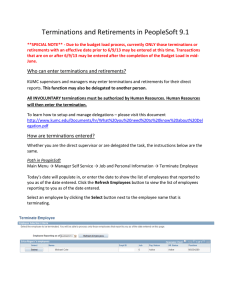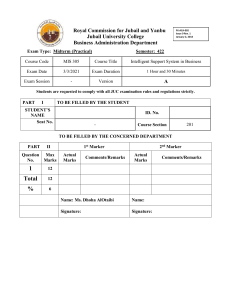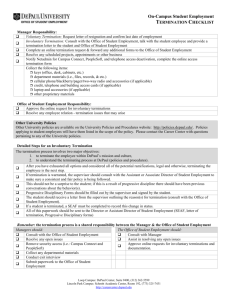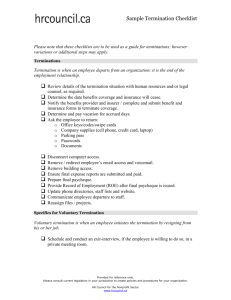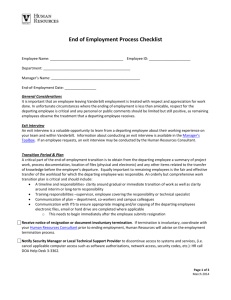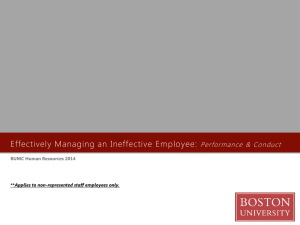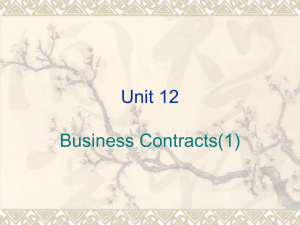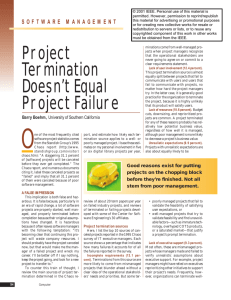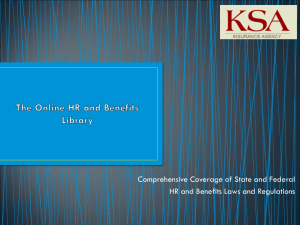Organizational-Exit-Records-Mgmt
advertisement
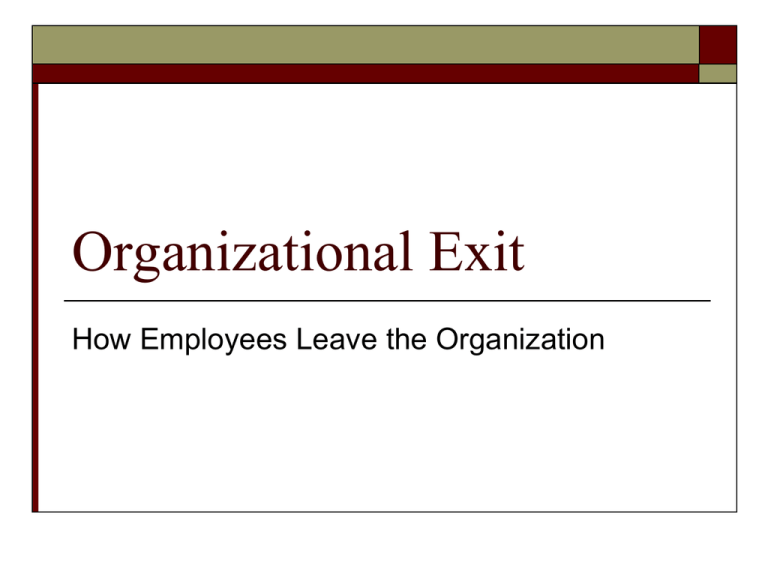
Organizational Exit How Employees Leave the Organization Organizational Exit The process of managing the way people leave an organization. Organizational exits can take the form of: Voluntary terminations Involuntary terminations Layoffs or RIF’s Reduction-In-Force RIFs Based on business necessity Clear (regarding criteria used to make layoff decisions) Convincing Explained with a measure of compassion Retained Employees Diminished job security Increased workload Different work assignments Changed organizational priorities Change in culture Loss of colleagues Loss of history/knowledge Retained Employees Restoring Security, loyalty and productivity Communicate-Address rumors, be forthcoming Behavior-Example of actions that are appreciated and those not tolerated. Timing-Transition period must be quick Leadership-Lead by example Job definitions-Educate employees about changes Rewards-Realign to support organizational goals Wrongful Terminations Constructive Discharge-Employer makes working conditions so intolerable that the employee resigns. Retaliatory Discharge-Employer punishing an employee for activities protected by law. Coercion-Involuntary retirement Involuntary Terminations Termination of employees for cause. Make sure company abides by all federal, state and local legislation and regulations. Make sure employee offered COBRA. Adhere to state wage payment laws. Termination Do’s Give as much warning as possible for mass layoffs. Sit down one on one in a private office. Complete the termination as quickly as possible. Provide a written explanation of severance benefits. Make sure employees hears about the termination from their manager first, not a co-worker. Express appreciation for employee contributions if appropriate. Control your emotions Inform other employees, customers and suppliers of the decision by giving a simple nonblaming statement. Termination Don’ts Don’t leave the room for confusion, tell them employee they are terminated in the first sentence and verify they understand. Don’t allow time to debate. Don’t make personal comments. Don’t rush the employee off site unless security is an issue. Don’t fire people on significant dates. Don’t fire employees while they are on vacation. Don’t make discriminatory statements. Don’t discuss reason for termination with remaining employees. Voluntary Terminations Categorized as resignations and retirements Early retirement plans need to identify eligibility criteria Voluntary waivers must be in writing and follow ADEA guidelines Exit Interviews An interview conducted when an employee is terminating their employment Exit interviews Face to face done by a neutral party Upon departure or soon after Confidential Outplacement A systematic process where laid-off or terminated employees are counseled in job placement and career skills. RECORDS MANAGEMENT Reasonable controls to ensure integrity, accuracy, authenticity and reliability Must be maintained in reasonable order, in a safe and accessible place, and in a manner they can be readily inspected/examined Readily converted to legible and readable paper copy Labeling, access, storage, back-up & quality assurance procedures established and consistently implemented Employee Records Management Federal regulations State regulations Conflict in retention period keep longest Employee access Routine record audits Record destruction program Maintain all records in event of lawsuit or discrimination charge until final disposition

